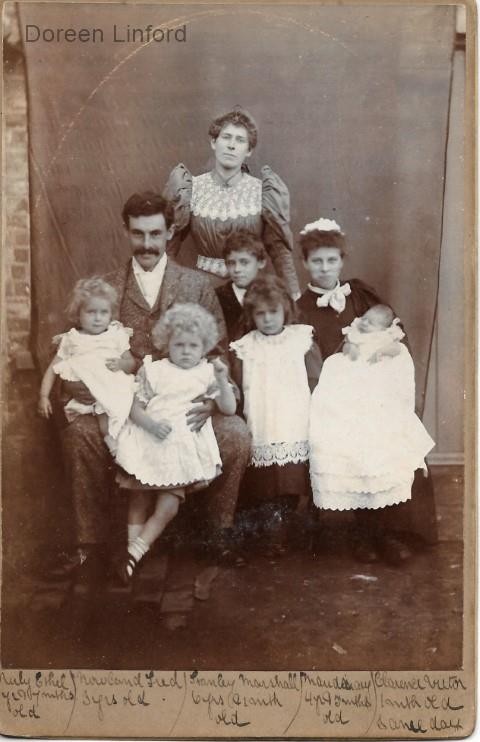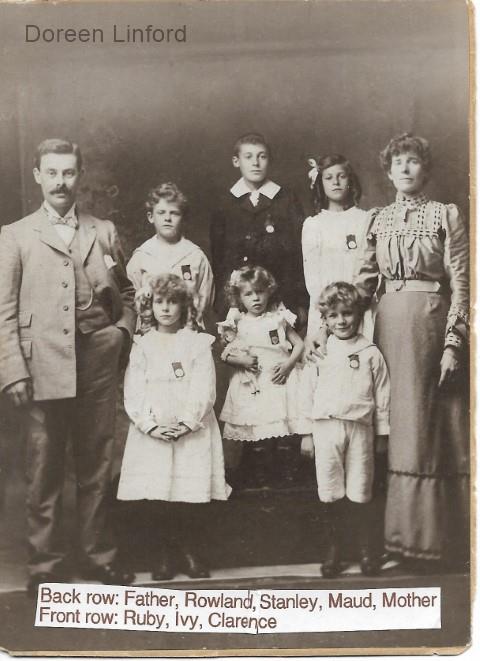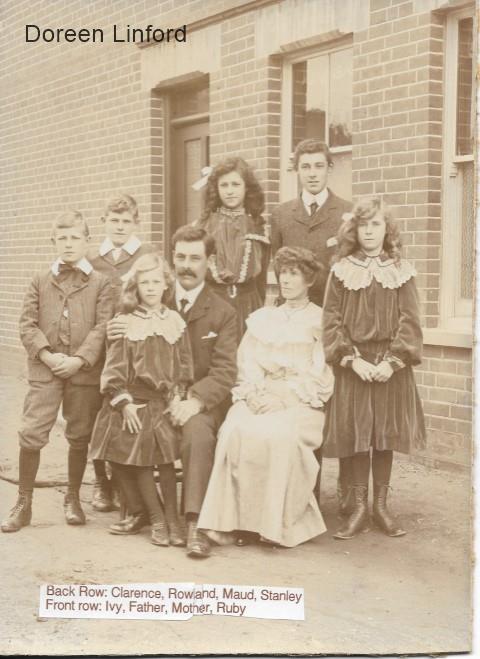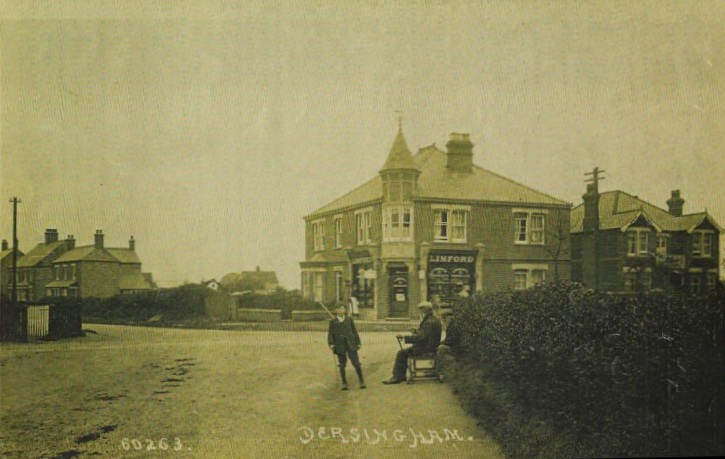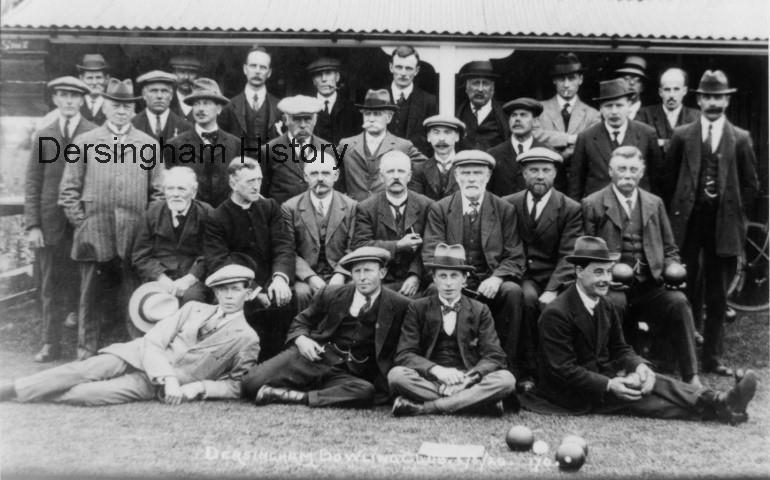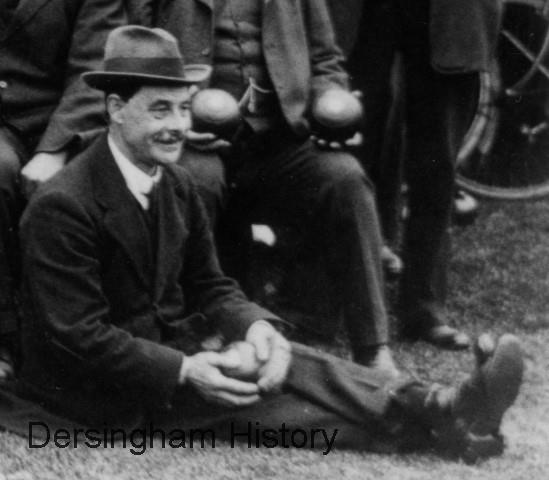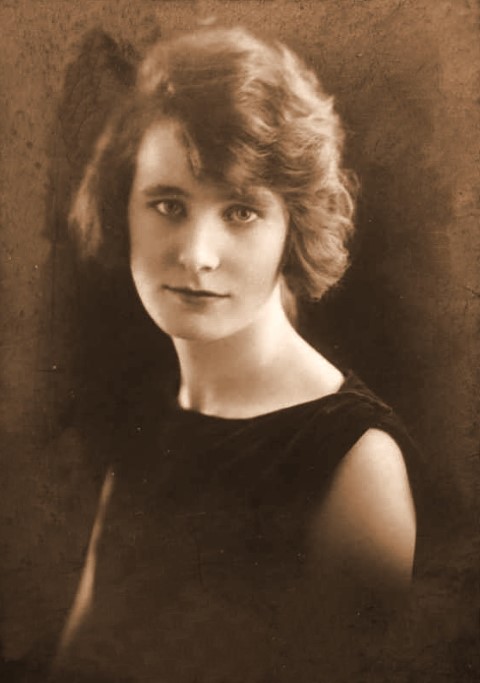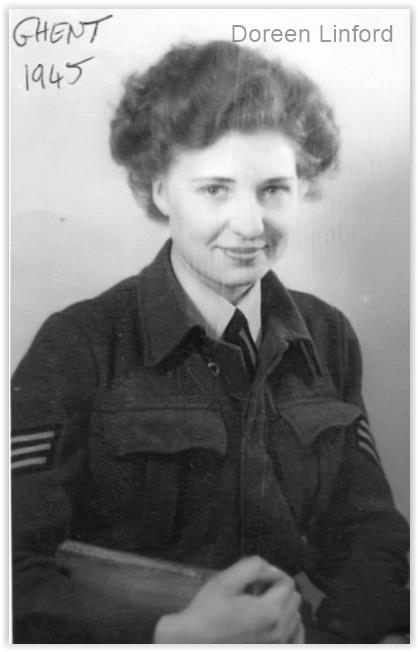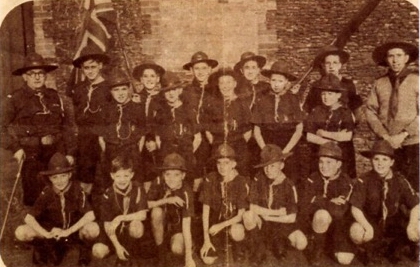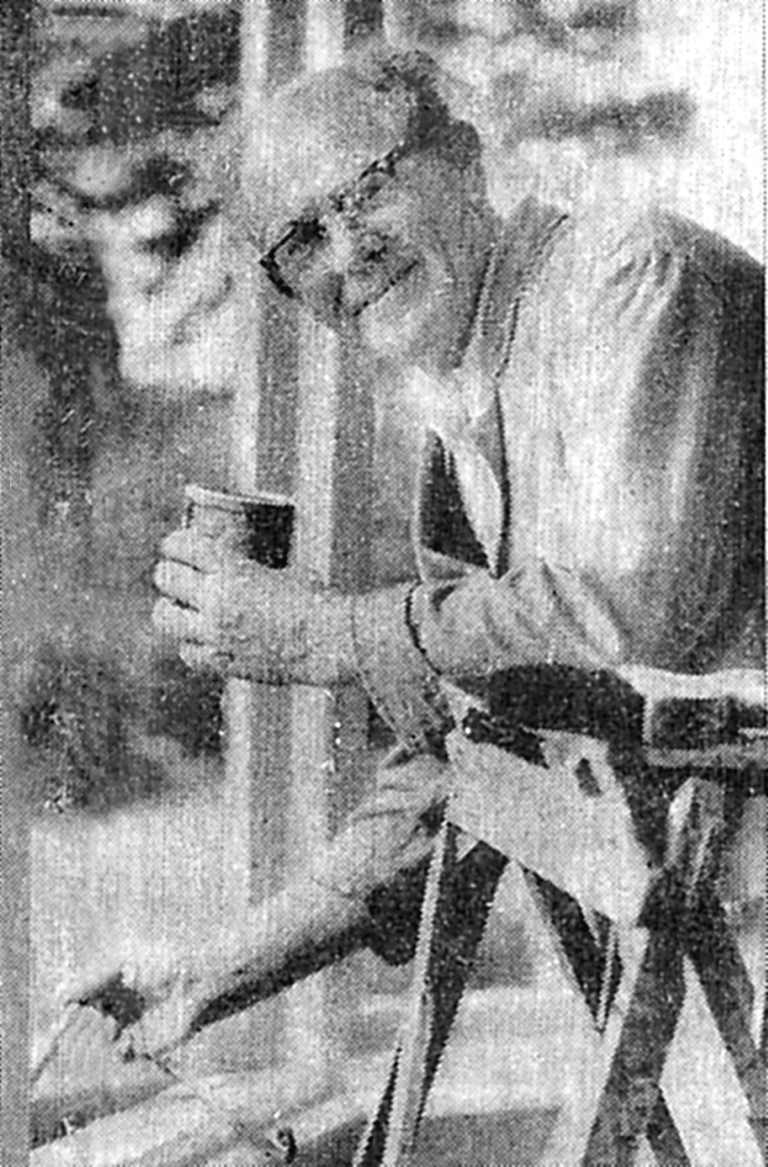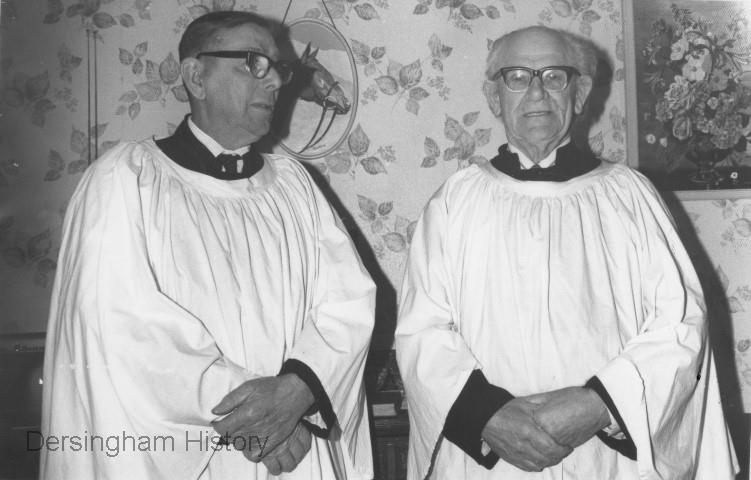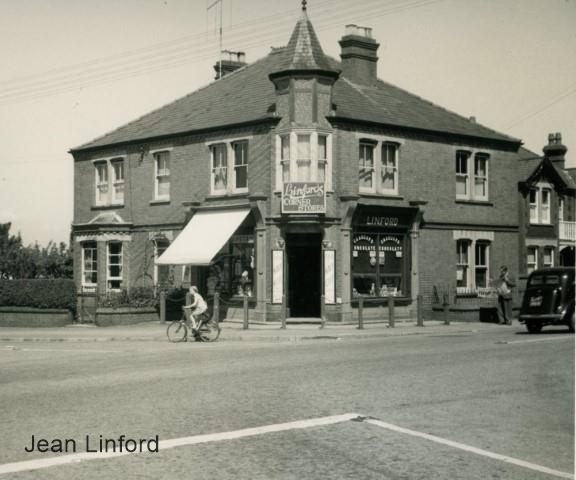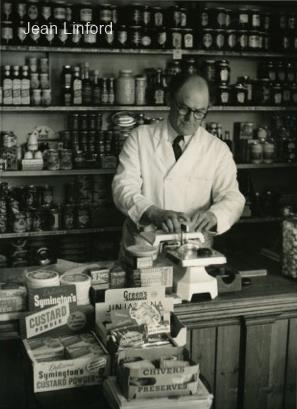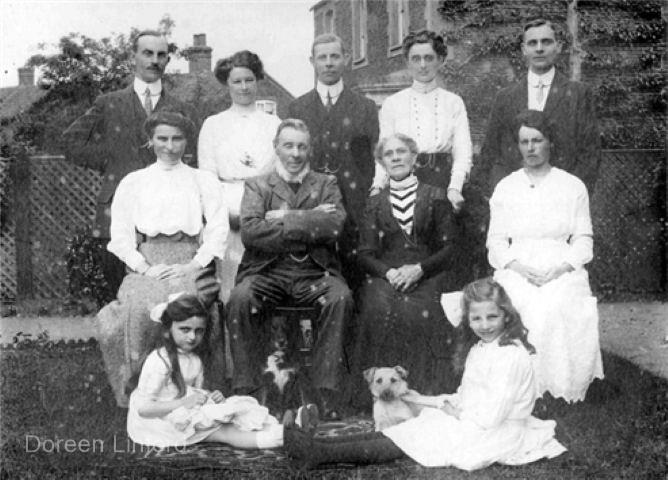From Issue 110
I was born in 1934 at “Kingswood”, the house attached to the butcher’s shop on the corner of Manor Road and Heath Road. This was referred to by Dick [Melton]; it was myhome for 12 years.The master butcher was Douglas Terrington, brother of Reg Terrington the grocer in Manor road. My mother, Maisie Linford, nee Terrington, was also in the business which traded when I knew it as “D and M Terrington Family Butchers”. It should have been D and P, not D and M. The P is for Percy my mother’s brother who was 5 years older. However, Percy in the evening of 27th July 1922 went out for a ride on his motor cycle with a friend. On Ken Hill Snettisham he lost control, fell off and suffered fatal injuries. My mother immediately abandoned her studies at Lynn High School to join the business.
This tragic accident must have caused great grief and sadness to my mother, grandparents and others who knew him. Needless to say, that I realised that I should never ever mention a desire to own a motor bike.In September 1939 WW2 started, and wartime regulations meant that for rationing purposes butchers had to get meat allocations from a controlled central source. I believe this was Helsdon’s of Snettisham for my grandfather. I also remember other wartime sources: Canterbury lamb from New Zealand, and big tins of corned beef from Argentina.Grandfather had always kept chickens and grown a lot of vegetables and fruit as part of the business. He grew much more during the war. One interesting new crop was maize to help keep the chickens fed.
Mention of Reg Houchen, motor engineer, has occurred from time to time in VV. I think it is less well known that he was an important part of the butcher’s business, both before and during the war. His motor engineering skill was certainly invaluable for keeping the the two temperamental delivery vans running. During the war it was only possible to keep one van going by taking parts from the other.
Another member of the team I remember well was Jack Howard of Pleasant Place. He was the bike delivery boy and general assistant. I used to like ”helping” him with his jobs. Fortunately, he was very tolerant. When war came Jack joined up as a private in the Royal Norfolks. He came to visit us in uniform just before being sent to help defend Singapore from invasion by Japan. I was very impressed and still remember soldier Jack’s visit very well.Jack lost his life on active service in Singapore on the 6th of February 1942 aged 24. His grave may be found in Kranji cemetery, Singapore. I always think of Jack on 11th November.After the war Reg needed to revive and expand his motor business, so his involvement with D and M Terrington came to an end.
Does anyone remember Houchen’s coach holidays to Dunoon? Fortunately, his brother Fred was able to take his place until it was time for grandfather to retire. The business was then sold in 1946, and the Linford family moved from “Kingswood” to “Glebe House” the house attached to “Linford’s Corner Stores”.
During my time as resident of Manor Road I was a regular customer of George King’s barber’s shop. George sold cigarettes and tobacco, and a lot of tobacco was smoked by customers waiting their turn. It was, therefore, very smoky in those days. Hair cut for a boy if I remember was nine pence (about 4 pence in today’s pennies). My grandfather always used to greet George as “your majesty”.“
Wellswill” school (not Wellswell) was not just for girls. I was a pupil until1942. I was then eight years old and boys had to move on. My sister Anne was also there, and one of my class mates was Dick Stanton. The Princpal was Miss Hough and Miss Wragge, her deputy, lived in “Greengates” the house next door. I am not sure when Miss Hough retired and the school closed, but I think it was not many years after I left.
The Scotts (shop Lynn High street) bought the house and I think they changed the name to “ Woodroyal”. They kindly arranged a re-union for old pupils soon after they had moved in.
Finally, I must mention Tuck’s tomatoes. My wife and I always bought some when we could. We have never tasted a tomato with a better flavour. My school friend Peter Hooks, “Holmfirth” Lynn Road, next to the Twites, also agrees. He thinks that Mr Tuck made his own tomato feed, and that sheep were essential for its preparation. Perhaps Bernie can help us with more information?
Pat (Patrick) Linford, Old Dersinghamite
Patrick Linford - Obituary - With full acknowledgement to Basingstoke Villager 2020 10 Oct
It is now six months since Pat’s death and still we have Government restrictions on gathering numbers in both Church and Halls; so sadly we have decided that no Memorial Service can be held in his name. Pat would have approved this decision as he never did like ‘Fuss’. Born in the Norfolk village of Dersingham. Pat remained “a good old Norfolk boy”, and was a regular correspondent to the Village Voice newsletter on the people, places and local history he recalled from boyhood.
Diligent in his studies, particularly the sciences, Pat was awarded the Queen’s medal (the first awarded in the Queen’s reign) from King’s Lynn Grammar School, he went on to study at Cambridge to begin his lifelong career in physics. Having honed his technical skills working for a beach photographer in his holidays, he went on to record his time at Cambridge
through the lens of his camera. Many of the faces captured during these three years continue to appear in later albums, often with the addition of growing families, as the friendships made remained dear to him throughout his life and travels.
He went on to work as a materials physicist at AWRE; here he remained throughout his working life, with trips to use research facilities at the Los Alamos laboratories in New Mexico. His research with colleagues into the development of thick film technology, a precursor to the silicon chip, led to publications in this field still cited to-day. Collaboration was also made with colleagues on the completion of The Daily Telegraph cryptic crossword, often with final clues solved on the bus home. His struggle to complete the puzzle on retirement serves as a testament to Pat’s inclusive approach to research and willingness to share and learn from others.
Pat will be remembered by family and friends for his love of music, the theatre and playing the piano, as a productive gardener, loyal friend, devoted church goer and family man. He joined the village school governors after his eldest son started education there, only retiring on reaching his eightieth birthday. Living in the same Hampshire village for over fifty years he was well known and respected; so much so that many feel they have lost a much loved friend. Kind and gentle with a great interest in all of those around him, he would always have time to engage in conversation, and was delighted whenever an opportunity to return to college with friends arose.
Pat died peacefully in his sleep on 1st March 2020.
The family.
By Doreen Linford - Village Voice 56, Page 5
May I please add a few words to my cousin P at Linford's article in the December Village Voice about Linford's shop or Glebe House as the family knows it. According to my father, Clarence (younger brother of Roland), the house was built about 1902 by my grandfather Frederick. It was built of Heacham hand-made bricks, had 5 bedrooms and 2 staircases, and was the first house in the village to have either electricity or a bathroom - I'm not sure which.
My grandfather was a builder, sign-writer, plumber and cabinet maker and was quite highly and multi-skilled; in fact he made the wooden memorial to the victims of WW1 in St Nicholas Church and also did the gold-leaf work. He built the shop for my grandmother to sell sweets, fancy goods, postcards and crested china etc and the story goes that King George's children with their governess would cycle from Sandringham to buy sweets there. On the lawn (Station Road side) grandmother would serve teas during the summer and years later when asked what he would like for his tea, my father would reply "plain tea sixpence". I imagine that this would have consisted of a pot of tea, a piece of cake and some bread and butter. Two bungalows now occupy this site.
There were 6 children. Grandmother died prematurely in 1920. Grandfather later married a local schoolteacher, Mabel Tombling, and they had a daughter, Edna. Edna married Alex Fisher from the fish shop (now the Chinese take-away). Incidentally, these premises used to be a bakery owned by Mr J (Jimmy) Jarvis and was one of 3 bakeries in the village then! His bakery was destroyed by fire.
Be fore the last war I reme mber travelling up from London by train once a year to visit grandfather, "Auntie" Mabel and Edna, usually on an excursion for the day, but sometimes to stay for a holiday. These were always very happy occasions. Perhaps some readers will reme mber Edna and Alex who were both active in the village. Edna, now a widow, lives in Snettisham.
Doreen Linford
Reader's Comments
Helen Richardson
I remember my uncle in there Rowland Linford in the 1950s.
Joanne Wing
Lovely to read some of my family’s history.



